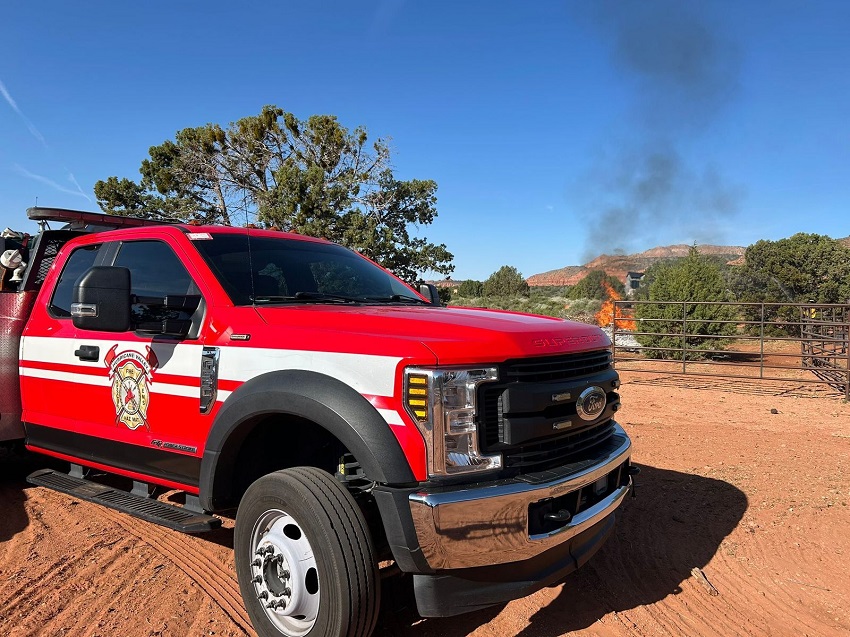LEEDS, Utah — As wildfire season looms on the horizon, fire crews in southern Utah are already setting controlled fires, but not to fight flames—they’re lighting them to prevent future blazes.
The Hurricane Valley Fire Department is currently in the midst of their third prescribed burn of the week, this time in Leeds. The burn is being conducted at the request of a private landowner who has built a firebreak around their property. The fire department was contacted to safely burn the surrounding vegetation, a service they provide free of charge.
Each prescribed burn is meticulously planned to ensure safety and effectiveness. Fire officials take into account several factors, including the weather, fuel types, nearby structures, and moisture levels in the environment.
“We assess what’s burning and what we want to protect,” said Tyler Hirschfeld, wildland captain with Hurricane Valley Fire. “In open fields, we might let the fire burn naturally, but when we’re near homes, animals, or trees that we want to protect, we use tactics like cooling the fire with water to reduce its intensity.”
The timing of these burns is critical, especially in the unpredictable fire conditions that can emerge in southern Utah. Despite a dry winter, a wet spring has left moisture levels in the valley higher than usual, allowing for safer burns before vegetation fully dries out.
“We had a really dry winter but a really wet spring,” Hirschfeld said. “This has created layers of fuel from last year’s grass, this year’s monsoon season grass, and now spring’s new crop. While the snowpack has been lower than average, there’s still enough moisture to manage these burns. But once everything dries out, it’ll become a significant concern.”
The fire department is careful about weather conditions before starting any burn. They will reschedule or cancel a burn if the forecast indicates conditions are unsafe. Crews avoid burning on red flag days, when wind speeds are high, or when there aren’t enough staff available to monitor the fire.
Homeowners are also encouraged to take steps to protect their properties from potential wildfires. Firewise guidelines recommend clearing brush, trimming back trees, and mowing grass around homes to create defensible spaces that can help slow or stop the spread of a wildfire.
“Every little bit helps,” Hirschfeld stressed. “By cleaning up the brush and maintaining defensible space, homeowners can make a big difference in reducing fire risk.”
Prescribed burns are a crucial part of fire management in the region. By reducing the amount of dry vegetation, fire crews are lessening the potential for larger, more destructive wildfires. While it may seem counterintuitive to set fires intentionally, this method is proven to be an effective way of preventing more dangerous blazes in the future.

